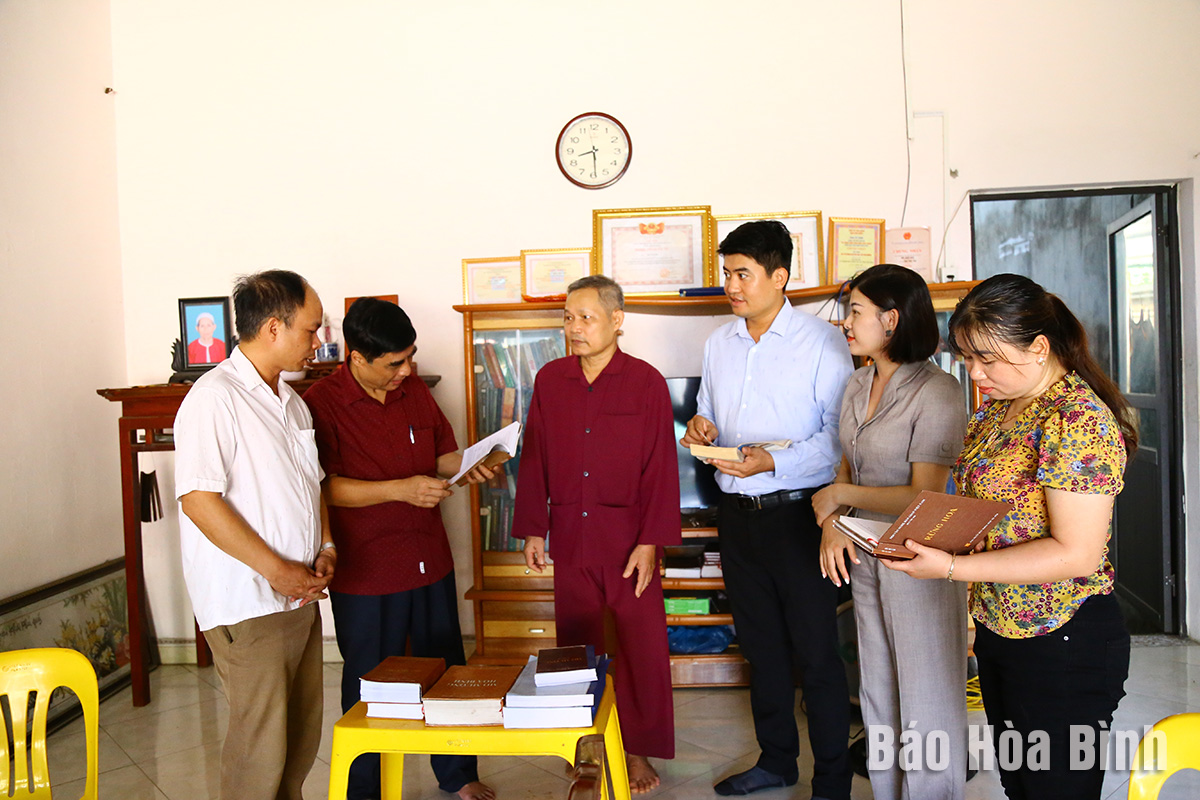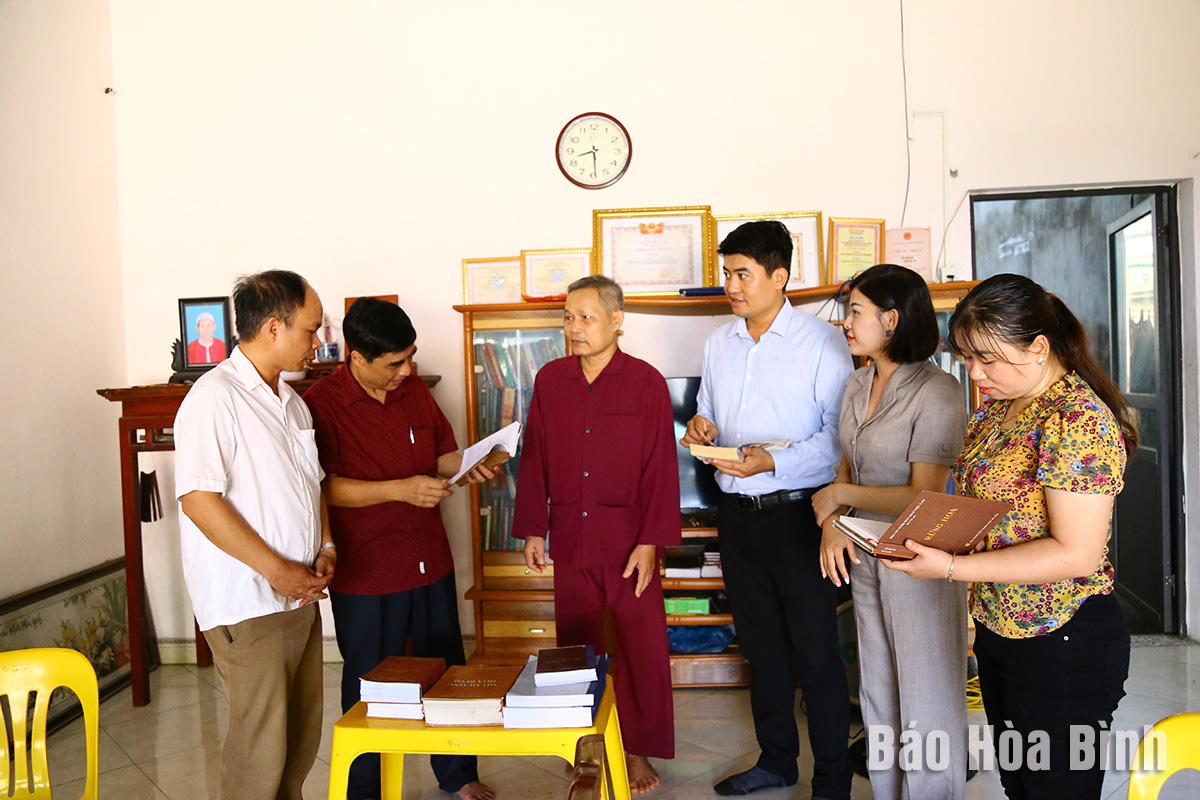
(HBO) – A retired teacher in Phong Phu commune, Tan Lac district is known far and wide for his enthusiasm for studying and preserving the cultural values of the Muong ethnic people in Hoa Binh province. Born and growing up in the ancient land of Muong Bi, Bui Van Noi has accumulated a lot of knowledge and documents about Muong ethnic culture.
Bui Van Noi (third, from left) shows people his studies about Muong
culture.
Realising the importance of preserving and promoting the Muong ethnic cultural
identity, he researched and wrote books and articles about culture in general
and Muong ethnic culture in particular. He also participated in the teaching of
the Muong language.
Since 2010, Noi has been the author or co-author of many books and dictionaries
relating to Muong culture. He also wrote for Hoa Binh Newspaper, Hoa Binh Arts
Magazine, Hoa Binh provincial Party Committee website, Nguon sang (Light)
Magazine of Vietnam Folk Arts Association and Ethnology Magazine.
Thanks to his studies and contributions to Muong culture preservation, Noi has
won many awards such as Prize A of the Vietnam Folk Arts Association in 2008;
Prize C of the Vietnam Ethnic Minorities Literature and Arts Association in
2013, a second prize in the contest "90 years of Hoa Binh Culture",
and two third prizes from the Hoa Binh Literature and Arts Association.
Bui Thi Trang, cultural officer of Phong Phu commune, said that
Noi has made great contributions to preserving and promoting the cultural
values of the Muong ethnic group in the commune in particular and Hoa Binh
province in general.
When the province’s Department of Culture, Sports and Tourism collected
tangible and intangible cultural values in the area, Noi was one of the active
contributors and he provided the agency with valuable information.
His work helps people across the country understand more about the rich and
unique culture of the Muong ethnic group. Particularly, the Muong script of Hoa
Binh province is being taught and disseminated to units, agencies and schools
throughout the province.
With an increasingly vibrant and widespread emulation movement aimed at building cultured residential areas and cultured families, Yen Thuy District has been making steady progress toward improving both the material and spiritual well-being of its people, while fostering a civilized, prosperous, beautiful, and progressive community.
Once lacking recreational spaces and community facilities, Residential Group 2 in Quynh Lam Ward (Hoa Binh City) has recently received attention for the construction of a new, spacious, and fully equipped cultural house. The project followed the model of state support combined with public contributions in both labor and funding.
The "All people unite to build cultural life" movement, which has been effectively integrated with Kim Boi district’s socio-economic development goals, is fostering a lively spirit of emulation across local residential areas, hamlets, villages, public agencies, and enterprises. In addition, through the initiative, traditional cultural values are being preserved and promoted, while community solidarity and mutual support in poverty reduction and economic development are being strengthened.
A working delegation of the Hoa Binh provincial People’s Committee led by its Permanent Vice Chairman Nguyen Van Toan on June 11 inspected the progress of a project to build the Mo Muong Cultural Heritage Conservation Space linked to tourism services in Hop Phong commune, Cao Phong district.
Born and growing in the heroic land of Muong Dong, Dinh Thi Kieu Dung, a resident in Bo town of Kim Boi district, in her childhood was nurtured by the sweet lullabies of her grandmother and mother. These melodies deeply imprinted on her soul, becoming an inseparable part of her love for her ethnic group's culture. For over 20 years, this love for her hometown has driven Dung to research, collect, and pass down the cultural values of the Muong people to future generations.
In the final days of May, the Ethnic Art Troupe of Hoa Binh Province organized performances to serve the people in remote, mountainous, and particularly disadvantaged areas within the province. These were not just ordinary artistic shows, but they were the meaningful journeys aimed at spreading cultural values, enhancing the spiritual life of the people and contributing to the preservation of ethnic minority cultural identities.



